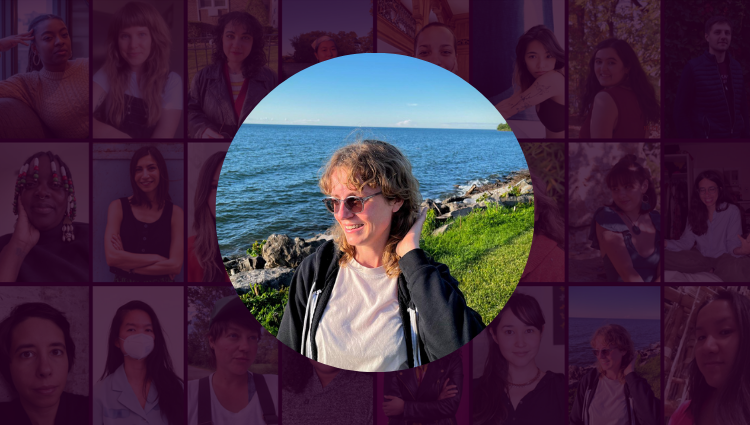The form of bare text
A process piece by Laila Milevski
Laila Milevski was one of our Summer 2024 Digital Residents. As a part of this program, we give our residents the option to publish an excerpt of their work, write a process piece, or have a Q&A with us. Here, Laila writes a process piece that explores the intersection of writing and drawing, illustration and bare text. You can read more Spotlights here.
Session 5 was “Form Matters.” As an illustrator and cartoonist, I write and draw together. My family memoir project lives on index cards secured with alligator clips in a shoebox. On each card, I draft one or two sentences and draw a quick sketch to suggest how image and text could collaborate. My “form” emerges from questions like: Does the image repeat the words or introduce something new? What is the sequence of panels? How are panels arranged on the page?

During this residency I focused on writing, but wasn’t prepared to think through the “form” of bare text. “In nonfiction we spin our wheels if we keep circling something,” Joyce said before introducing the second prompt of the day: the spiral. A spiral structure changes our path to approach the beginning without re-entering the groove we’ve just created.
I wrote about my dead grandmother, whose ghost I chase in my memoir: “The memories that come up are bits. They don’t cohere, they’re sensations. Raspberries, Entenmann’s pound cakes, dark and colorful oil paintings on her walls… The memory that comes up is full of shame. My memory says nothing about Omamma, it is all about me. How can I remember so little? I guess it means I never thought much about her, never wondered, never asked.”
Reading it reminded me of my frustration five years ago while writing and illustrating my grandmother’s life for my MFA thesis (an early iteration of the project I’m thinking about today). With my blue colored pencil, I underlined sentences from the freewrite and scribbled: “How does this connect to my inability to draw her? Scan all the drawings I tried to make of her. Reaching, longing, never touching, never understanding. How to accept the limitations of my knowledge of her?”

This was an exciting new angle: I had not written about drawing as a reflection of my relationship to my grandmother. Could it be the beginning of a spiral, memory leads to self absorption leads to drawing leads to different ways of knowing, one of which is memory? Could it be a way to diversify my visual language, to relieve the self-expectation to draw my story as a longform comic? I expanded the freewrite to share at our celebratory reading, and presented it with some new, mostly old, drawings and photographs to give the other residents a peek into my memoir’s visual world.

Visually the reading resembled a Powerpoint I’d use to update my MFA advisors on my progress. It had that half-finished scantness that couldn’t hide that I scrambled to assemble something the evening before. But what of it? The motto of the residency is “We keep beginning,” and I certainly feel that way every time I pick up my project after another six or nine or twelve months away from it. This time around, I’m more confident that I’ll keep going with what I’ve started—and that I’ll be open to new ways of filling the empty spaces on my index cards.




